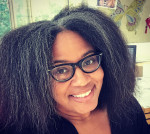
Teaching literacy across disciplines is difficult.
When I was an eighth-grade ELA teacher, my school required that all content-area teachers participate in a cross-disciplinary unit each year. Teachers in ELA, math, science, and social studies were directed to co-plan and teach a topically themed unit students would explore from different perspectives. The ELA teacher was supposed to teach the agreed-upon text while the others were supposed to teach the content. It was a mess, until we figured it all out.
One of the ways things go wrong
I clearly remember a planning session for one of these required cross-disciplinary units.
I was working with a science colleague, and I could feel my frustration growing in minute increments. He wanted the unit to be about frogs because the science curriculum required a focus on something about animal kingdoms and classes. The trouble was, I didn’t have a good reading selection about frogs. I didn’t have any frog poems. I didn’t have any meaningful non-fiction about frogs. I had no plays about frogs, no speeches about frogs. I didn’t even have a quotation about frogs. (Of course I thought of Frog and Toad, a staple in elementary school, but it didn’t make sense to use it with middle schoolers.) In fact, what we were about to read couldn’t have had less to do with frogs if I’d tried. We were about to start a unit on freedom by reading What to the Slave is the Fourth of July? by Frederick Douglass.
The science teacher, however, did have a text about frogs. His double-sided article was all about what they eat and where they live. It included models of frog anatomy and a graph of their lifespans.
After skimming the article, I asked, “What do you want me to do with this?” I was genuinely curious. What was I, as an ELA teacher, supposed to do with a scientific article on frogs that had nothing to with any of the topics or themes in my ELA classroom, or anything to do with ELA as a discipline? “Miah,” my colleague began, “they can’t read. Teach them how to read this so I can teach them about frogs.”
Something important clicked at that moment in the conversation. I replied, “Do you think eighth-grade reading teachers teach kids how to read scientific articles?”
“Yes,” he replied, quite definite.
“I can assure you that there is a zero percent chance a student will leave my ELA class understanding how to read a piece like this.”
“Really?” he asked, “Don’t you teach reading?” Clearly he was as confused as I was.
“Not this type of reading,” I said.
Reading literature vs. reading scientific texts
I didn’t have the language then to explain my confusion to my colleague, to tell him that ELA teachers didn’t teach kids how to read like a scientist. It wasn’t our job to show them how to deconstruct a model, to connect phenomena to theory to observation, to navigate the complex content that undergirds the language of a scientific text, or to understand how language is used flexibly in science texts. Sure, I could teach my students the word “croak,” but it would most assuredly be in the context of a character who had shuffled off this mortal coil, not the sound a frog makes.
If I had done what my science colleague had expected of me, I would have spent precious time with my students reading a text on frogs, finding the central idea and supporting details, tracing the structure, and even identifying the organizational pattern. But that would have been a shallow and cursory attempt at understanding the importance of the science content. My instruction would have resulted in little more than my students gathering decontextualized information.
Yet, at the same time, I understood my colleague’s confusion. Many literacy skills and practices transfer from place to place, discipline to discipline. These skills include decoding, fluency, and vocabulary. They include writing with purpose, attuning to task and audience. However, text is highly contextual and situational. Scientific texts frequently have structures unfamiliar to students, including visual elements likes charts, graphs, and diagrams. They often include technical vocabulary with Latin and Greek roots, and everyday words like “stage,” “family,” and “order” can have very different meanings than they do in other content areas. Science texts are also full of complex sentences that often use the passive voice. Students need disciplinary literacy support to make meaning of these types of texts.
We must teach literacy across disciplines as disciplinary literacy
Back when I was teaching, the language we used in schools to refer to what my science colleague and I were trying to accomplish was “content-area literacy,” not “disciplinary literacy.” Content-area literacy focused on applying general reading strategies across different content areas. Disciplinary literacy, in contrast, does not prioritize all-purpose reading strategies. Instead, it emphasizes learning how to read and write in ways that reflect the expertise of a discipline.
Many of us erred in the belief that all reading skills are learned in reading or ELA classes. We believed students could just apply the generic reading skills they’d learned in their ELA class in their science, social studies, and mathematics classes. But that exchange with my science colleague began to show me that something was not quite right. For years, the science department had been exasperated with us, the ELA teachers, for not teaching students how to read the texts, graphics, and models used in science texts, or how to write to demonstrate scientific understanding.
What I now know we really wanted to achieve with those mandatory collaborative units was disciplinary literacy. What we wanted was to show students how to ask questions like a scientist, a historian, a mathematician, and a student of the letters to derive rich and useful meaning from a text. We wanted to turn our students into readers equipped to attend to the unique and nuanced reading demands within each discipline. We wanted our students to become apprentices to the disciplines.
As they progressed through the grades, we also wanted our students to be able to meet the reading demands of each discipline as texts became even more specialized. As writers, we wanted them to understand that attention to task, purpose, and audience are key components of writing in all disciplines but that the specificity of audience, task, and purpose within each discipline is unique.
A happy ending
That fateful school year ended with a lot of frustration and ongoing confusion between me and my science colleague. However, this story does have a happy ending.
That experience began to open my eyes to the importance of teaching literacy across disciplines effectively. It began to disabuse notions some of my colleagues—even my ELA colleagues—held about literacy instruction. That year ended with me teaching “The Masque of the Red Death” by Edgar Allan Poe and thinking, halfway through the unit, “This would be a perfect collaboration opportunity for social studies!”
The next year, I helped plan a cross-disciplinary unit on plagues. The ELA teachers taught Poe while the social studies teachers taught about the Black Death in Europe and the science teachers taught about the science of infectious disease. Each of us had our own texts that were relevant to the topic and our disciplines.
It was so much fun to listen to students talk throughout the school day, making connections on their own about plagues, Poe, and the past. Our students built multifaceted, connected knowledge, understood the topic with more flexibility, discussed the content across disciplines, and—best of all—asked us to do it again.







